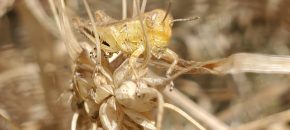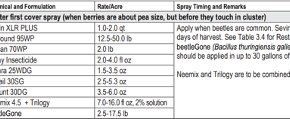Recently, New Jersey tree fruit growers have expressed concerns regarding the use of glufosinate for weed control in apple and peach orchards. Glufosinate is a nonselective post-emergence foliar herbicide that can be used for directed applications around trees, vines, and berries. Glufosinate provides control of many annual broadleaf and grass weeds; however, control of large […]
Continue reading...About the safe use of glufosinate and glyphosate herbicides in apple and peach orchards
Fruit IPM Information for 6/29/21
Vegetable Disease Update – 6/29/21
Cucurbit downy mildew has been reported on cucumber (6/16/21) and cantaloupe (6/22/21) in southern New Jersey. For more information on CDM and its control please click here. To track the progress of CDM please visit the CDM forecasting website. No reports of Late blight in the region. To track the progress of Late blight in […]
Continue reading...Sparganothis Fruitworm Degree-Day Update: as of June 27, 2021
Based on our degree-day (DD) model for Sparganothis fruitworm, first eggs hatch at about 895 DD (see chart). As of June 27, Sparganothis has accumulated 991.5 DD (using April 15 as biofix). This indicates that eggs have started to hatch, and fruit will become susceptible to infestation since larval injury to fruit usually begins after […]
Continue reading...NEWA Disease and Insect Forecasting System
The NEWA (Network for Environment and Weather Applications) website managed by the New York state Integrated Pest Management (IPM) program can be found at http://newa.cornell.edu/. The website is easy to use and offers weather data as well as insect and disease forecasting (e.g., P-days for Early blight and BlightCast for Late Blight in potato, and […]
Continue reading...Grasshopper 4th instar in ready to harvest wheat

June 26, 2021 A field of ready to harvest wheat was observed infested with 4th to 5th star grasshopper nymphs in Salem County. While waiting for positive identification from entomologists familiar with the differences in the nymp identification, these nymphs appear to be differential grasshoppers (Melanoplus differentialis). The uniform yellowish color of nymphs observed, is […]
Continue reading...
